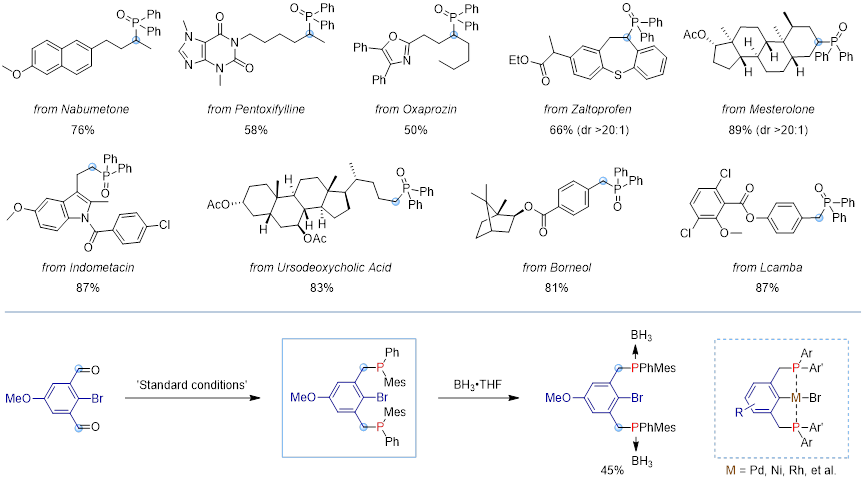The [1,2]-Brook rearrangement, widely used in organic synthesis, involves the base-mediated rearrangement of a nucleophilic site from an oxygen atom to an adjacent carbon atom. One of its most notable variants, the [1,2]-Phospha-Brook rearrangement, has also drawn significant attention. However, the reliance on pentavalent phosphates in this transformation has posed limitations to the development of new reactions.
Recently, Prof. XU’s team in Tongji university has developed a Lewis acid-mediated [1,2]-Phospha-Brook rearrangement involving trivalent phosphines, enabling the direct deoxygenative phosphonylation of carbonyl compounds. This study, titled "Trivalent Phospha-Brook rearrangement enabled practical deoxygenative phosphonylation of carbonyls", has been published online in the internationally renowned journal Nature Communications.

This Lewis acid-mediated trivalent phosphine Phospha-Brook rearrangement enables efficient deoxygenative phosphonylation of a broad range of carbonyl compounds, including alkyl aldehydes, aryl aldehydes, linear aliphatic ketones, cycloalkyl ketones, and aryl ketones, affording the desired products in good yields. The reaction also exhibits excellent functional group tolerance, allowing for late-stage modification of structurally complex drug molecules. Furthermore, using dialdehydes as substrates, this method provides a rapid route to a class of tridentate phosphine ligands.

Prof. XU’s team has long been dedicated to the development of deoxygenative difunctionalization of carbonyls (DODC) reactions. This work offers new insights and strategies for achieving DODC reactions through C–P–O rearrangement pathways.
The first author of the paper is Ph.D. candidate Xiaoqiang Wu, with Prof. Tao XU from Tongji university and Prof. Wei Zhong from Jiaxing university as corresponding authors. Tongji University is the first corresponding address. This work was supported by the National Natural Science Foundation of China, the Xiaomi Young Scholars Fund, the Fundamental Research Funds for the Central Universities, and the funding from Jiaxing University.
Paper link: https://doi.org/10.1038/s41467-025-58990-1